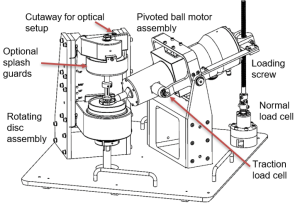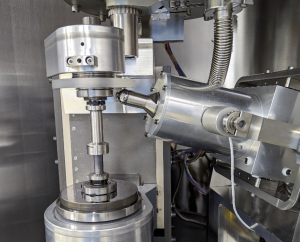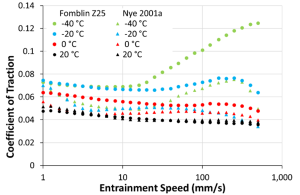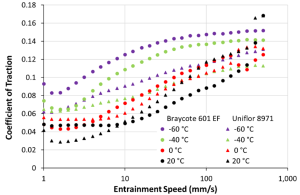Presented at 20th European Space Mechanisms And Tribology Symposium (ESMATS), Warsaw, September 2023
The results of the first vacuum mini traction machine tests of fluid lubricants are presented herein. These tests characterise the performance of 4 vacuum lubricants from room temperature down to -80°C. Several lubricants, including common space fluids Fomblin Z25, Nye 2001a, and Braycote 601EF, have been tested to study how the fluid lubricant behaviour changes based on the test conditions, in particular at reduced temperature.


Overall, temperature was found to have a significant impact on the performance of all the fluids tested. At low temperatures, unique insights into the behaviour of the fluid-lubricated contacts have been found, as traction properties vary as temperature decreases and lubricant properties transition from a liquid to more solid state. The observations, gathered at a tribological level for the first time, were found to be unique to the fluid under test and test conditions, hence may be used in future to inform lubricant selection.
For oils the traction generally increases as temperature decreases and the behaviour shifts towards the hydrodynamic lubrication regime. This shows that the viscosity is increasing, and the fluid thickening and solidifying, with a reduction in temperature.
Grease behaviour appears more complex, with traction inconsistently increasing as temperature decreases and a transitional behaviour at moderately low temperatures. This transitional behaviour is suggested to result from, and varies due to, the fundamental product formulation.


Testing near, or below, the manufacturer reported pour point or minimum application temperature was shown to be potentially problematic. High, unsystematic traction behaviour can be observed.
The first interferometric studies of a Fomblin Z25 fluid film, under thermal-vacuum conditions, are presented. These first analysed results of the film thickness are observed to give comparable trends to those taken in ambient, room temperature, conditions in the literature.
Full paper available here